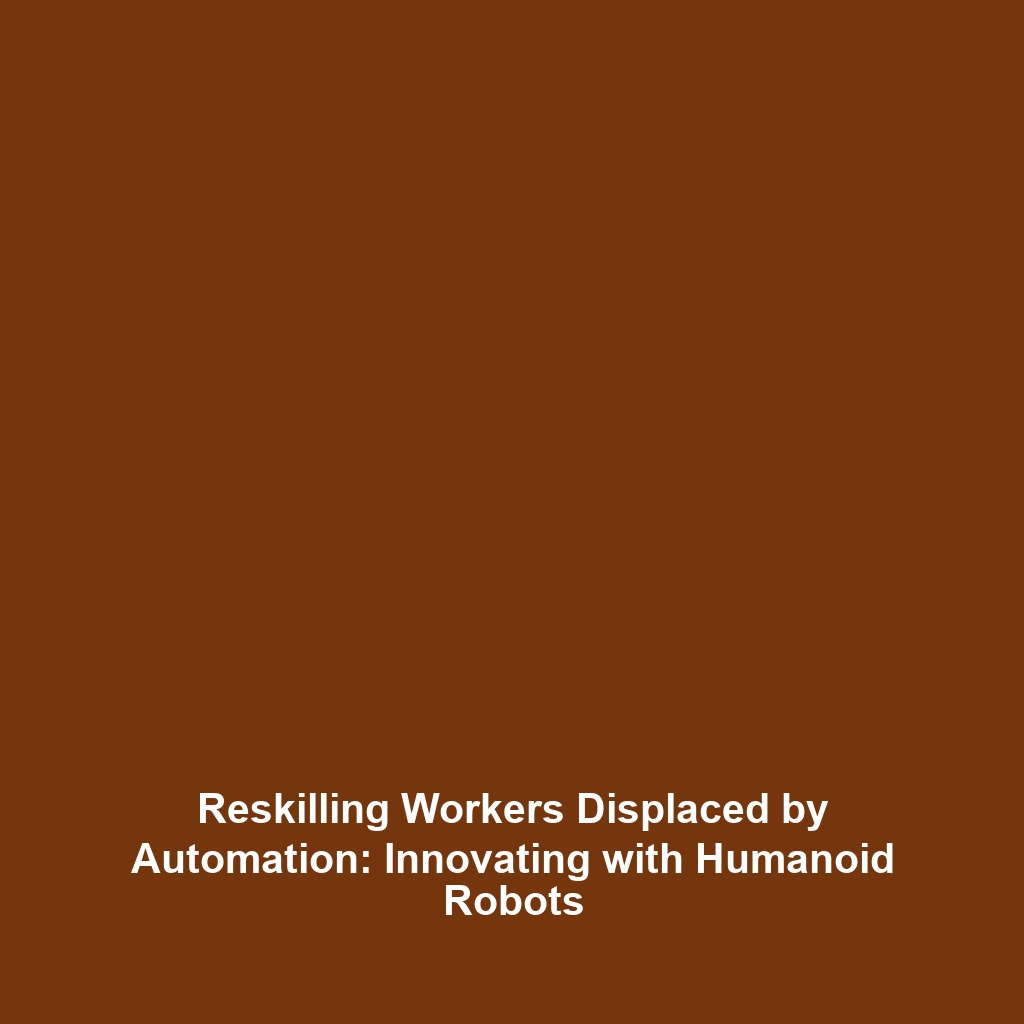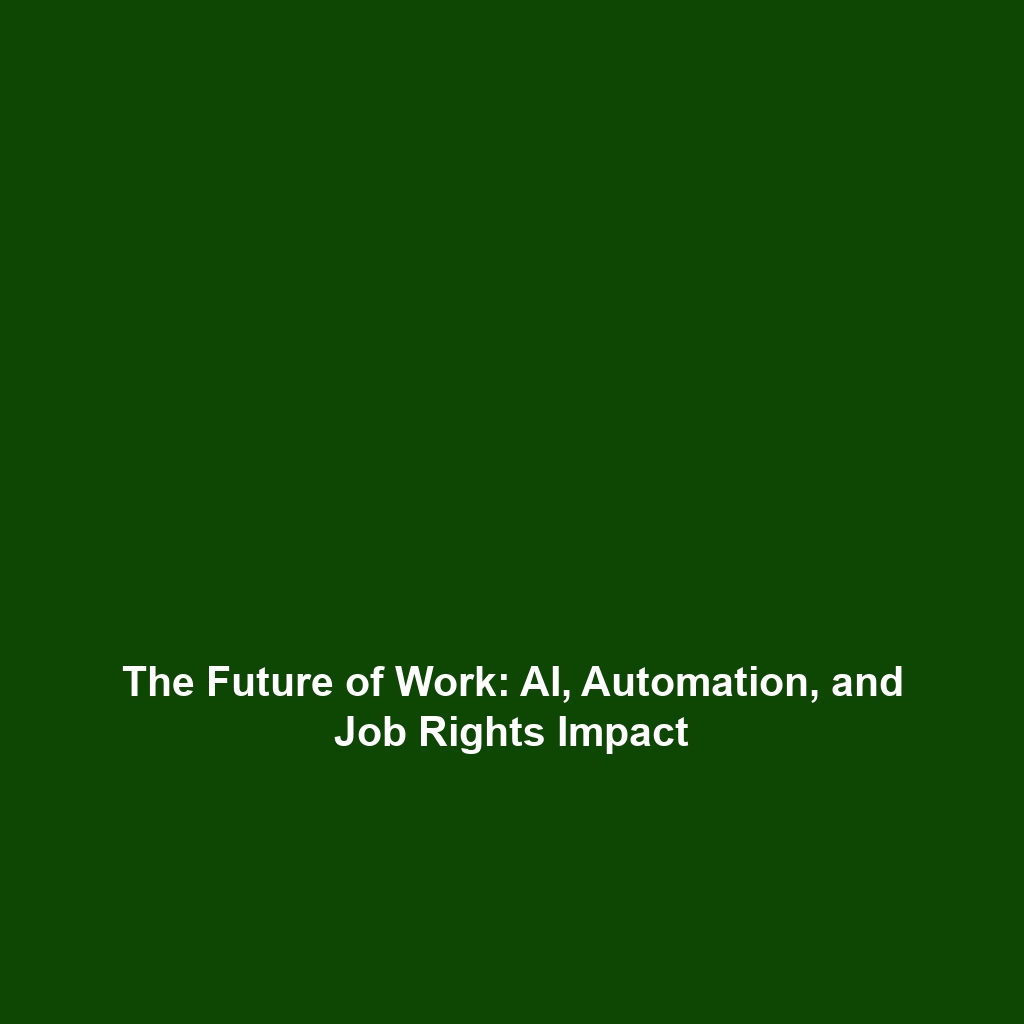Balancing Innovation with the Need to Reskill and Redeploy Workers Displaced by Automation
Introduction
The rapid advancement of humanoid robots has ushered in transformative changes across various industries. However, this innovation comes with significant challenges, particularly the need to reskill and redeploy workers displaced by automation. As robots increasingly take on roles previously held by humans, addressing the skills gap becomes paramount. Understanding how to balance these dual priorities is critical not only for the workforce but also for maximizing the benefits brought by humanoid robotics in enhancing productivity and efficiency in the workplace.
Key Concepts
Understanding Automation and Reskilling
The interplay between automation and workforce development involves several key concepts:
- Job Displacement: As tasks become automated, workers in certain sectors face job losses.
- Reskilling: This involves training displaced workers to acquire new skills relevant to a changing job market.
- Humanoid Robots: These robots are designed to replicate human actions and can be integrated into various fields, including healthcare and customer service.
The challenge lies in effectively integrating these concepts to ensure a smooth transition for affected workers while embracing technology-driven innovation.
Applications and Real-World Uses
The practical applications of balancing innovation with reskilling workers in the context of humanoid robots are increasingly relevant. Here are some significant examples:
- Healthcare Assistance: Humanoid robots are being deployed to assist healthcare professionals, creating a demand for training programs for those transitioning into supportive roles.
- Manufacturing: As robots handle repetitive tasks, workers are required to adopt new skills in programming and maintenance of these automated systems.
- Customer Service: The hospitality sector utilizes humanoid robots to enhance customer experiences, necessitating the reskilling of employees in human-robot interaction.
These examples illustrate how balancing innovation with the need to retrain workers is crucial to the successful integration of humanoid robots across industries.
Current Challenges
Despite the advancements, several challenges impede the effective application of innovation alongside worker reskilling:
- Lack of Funding: Many companies struggle to allocate resources for extensive training programs.
- Varying Skill Levels: Workers possess different levels of education and experience, complicating uniform reskilling initiatives.
- Resistance to Change: Some employees may resist the integration of robots into their work environments, fearing job loss or decreased relevance.
- Data Security: Concerns about privacy and data protection are heightened as humanoid robots collect and process personal information.
Future Research and Innovations
Advancements in humanoid robotics and reskilling methodologies are underway, seeking innovative solutions. Future research may focus on:
- Augmented Training: Utilizing virtual and augmented reality to create immersive training experiences for workers.
- Adaptive Learning Technologies: Implementing AI-driven tools that customize training based on individual learning paces and styles.
- Collaboration Frameworks: Developing partnerships between industries, educational institutions, and governments to enhance workforce transition programs.
These innovations aim to create a more resilient workforce better equipped for a future intertwined with humanoid robots.
Conclusion
In conclusion, balancing innovation with the need to reskill and redeploy workers displaced by automation remains a pressing issue as humanoid robots continue to shape the future of work. Addressing the challenges and leveraging future research can facilitate smoother transitions for employees affected by these technological advancements. Stakeholders must prioritize reskilling initiatives alongside robotic integration to ensure a sustainable workforce. For further insights, explore our articles on the future of robotics and strategies for worker reskilling.

